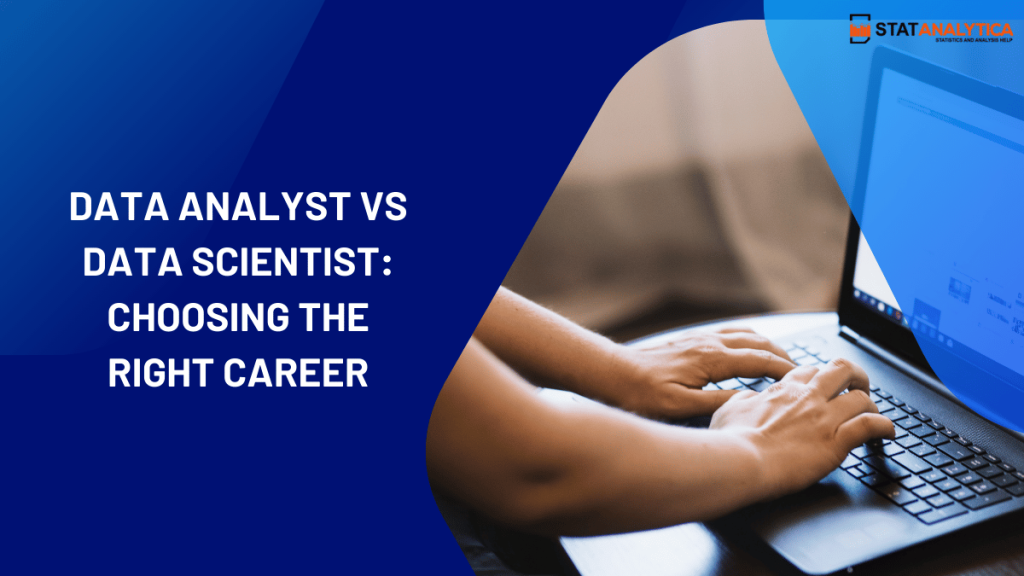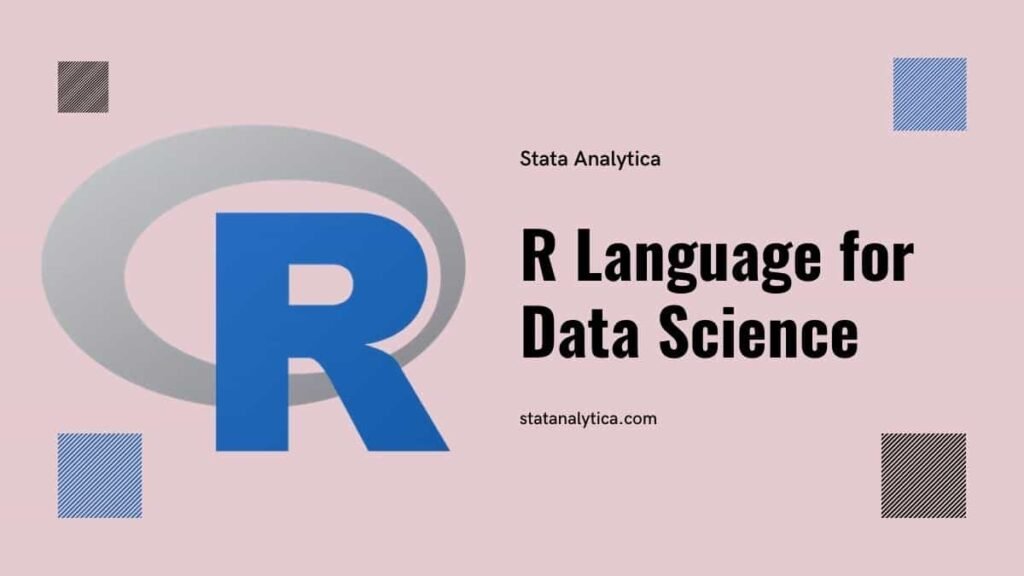Data Analyst vs Data Scientist: Let’s first understand by taking a simple example. Imagine you’re planning a big family party. You have two helpers, each with a unique way of making sure the party is a success.
The first helper is like a Data Analyst. They look at what has worked in past parties—like what food was popular, which games were a hit, and how many guests showed up. They use this information to make sure everything is organized just right. They might create a list of the most popular dishes, decide how many chairs you’ll need, and set up the party area based on past successes. Their goal is to make sure everything runs smoothly based on what they know from the past.
The second helper is like a Data Scientist. They take a more forward-thinking approach. They use advanced tools to predict what your guests might enjoy this time, considering new trends and using complex methods to plan things like the best time to send invitations or the latest party trends. They might use new information about your guests’ preferences to create a personalized experience. Their goal is to predict future trends and make your party even better by preparing for what might happen.
In this blog, we’ll explore how these two will follow their roles and responsibilities in their career paths. We will also discuss Data analyst vs data scientist, and how to decide which approach might suit you best!
Who Are Data Analysts and Data Scientists?
Table of Contents
Imagine a giant library filled with books. This library symbolizes all the data a company has. Finding the right book or information from these books requires someone who knows exactly where to look and how to interpret it. This is where Data Analysts and Data Scientists come into play. They are like skilled librarians who help companies make sense of their data to achieve their goals.
What Does a Data Analyst Do?
Data Analysts are like detectives who solve puzzles using historical data. They focus on structured data, which is neatly organized and easy to analyze, like spreadsheets. Here’s a closer look at their work:
- Collecting Data: Data Analysts gather information from various sources, such as company databases, surveys, and external research. They make sure to collect relevant data that can answer specific business questions.
- Cleaning Data: Just like a librarian organizing books, Data Analysts clean the data to remove errors and inconsistencies. This step ensures that the data is accurate and ready for analysis.
- Analyzing Data: They use tools like Excel, SQL, and Python to examine the data. They look for patterns, trends, and correlations that can provide valuable insights. For example, they might analyze sales data to understand which products are most popular.
- Visualizing Data: Data Analysts create charts, graphs, and dashboards to present their findings. This helps others understand the data quickly and easily. For instance, they might create a graph showing how sales have increased over time.
- Reporting: They prepare reports that summarize their findings and provide actionable recommendations. These reports help decision-makers understand the data and make informed choices.
Also Read
- Top 8 Key Skills That Every Data Analyst Should Have
- Top 20+ Data Science Terms To Learn By Data Analysts In 2023
Example
Imagine a company wants to know how its marketing campaigns are performing. A Data Analyst collects data from various marketing channels, cleans and analyzes it, and then creates a report with visualizations to show which campaigns are most effective. There are lots of data mining tools that depend on your specific needs, such as the complexity of data, ease of use, and the types of analysis you wish to perform.
What Does a Data Scientist Do?
Data Scientists are like wizards who use advanced techniques to uncover hidden insights and predict future trends. They work with both structured and unstructured data (like text from social media or images). Here’s what they do:
- Gathering Data: Similar to Data Analysts, Data Scientists collect data from various sources. However, they often work with larger and more complex datasets.
- Cleaning and Processing Data: They prepare the data for analysis, which involves more sophisticated techniques to handle large volumes and different types of data.
- Building Models: Data Scientists create predictive models using machine learning algorithms. These models can forecast future trends or behaviors. For example, they might build a model to predict which customers are likely to make a purchase.
- Developing Algorithms: They write complex algorithms to automate the data processing and analysis. These algorithms can handle large amounts of data and provide insights quickly.
- Creating Visualizations: Data Scientists build advanced visualizations, such as interactive dashboards, to present their findings. These tools help them understand complex data and make data-driven decisions.
Example:
A retail company wants to predict customer purchasing behavior. A Data Scientist collects transaction data, builds a machine-learning model to forecast future purchases, and creates an interactive dashboard to visualize the results. You may check various data science techniques that a data scientist uses.
Career Paths: Data Analyst vs Data Scientist
The Journey of a Data Analyst
Starting a career as a Data Analyst often begins with entry-level roles and gradually progresses to more advanced positions.
Here’s a typical career path:
- Entry-Level Positions:
- Data Entry Clerk: Responsible for entering and maintaining data in databases.
- Research Assistant: Helps with data collection and preliminary analysis.
- Junior Data Analyst:
- Gained experience with tools like Excel and SQL.
- Analyzes basic datasets and provides insights.
- Data Analyst:
- Takes on more complex data analysis tasks.
- Works with different data visualization tools to present findings.
- Senior Data Analyst:
- Leads data projects and mentors junior analysts.
- Provides strategic insights to help guide business decisions.
- Specialized Roles:
- Data Architect: Designs and manages data systems.
- Business Analyst: Focuses on using data to improve business processes.
Example
Switlana starts as a data entry clerk, entering data into spreadsheets. After gaining experience, she becomes a Junior Data Analyst, analyzing sales data. Eventually, Laura advanced to a Senior Data Analyst role, leading data projects and advising the company’s leadership on data-driven strategies.
The Journey of a Data Scientist
A career in data science typically begins with a strong educational background and evolves into more specialized roles. Here’s a common career path:
- Entry-Level Positions:
- Research Assistant: Supports data collection and analysis.
- Junior Data Scientist: Assists in building models and analyzing data.
- Data Scientist:
- Develops and deploys machine learning models.
- Analyzes large datasets to provide insights.
- Senior Data Scientist:
- Leads advanced data projects and builds complex algorithms.
- Provides strategic recommendations based on data analysis.
- Specialized Roles:
- Machine Learning Engineer: Focuses on designing and deploying machine learning systems.
- Director of Data Science: Oversees data science teams and strategy.
Example:
Michael starts as a research assistant in a data science lab, learning the basics of data analysis. He then progresses to a Data Scientist role, developing predictive models. With more experience, Michael becomes a Senior Data Scientist, leading projects and creating advanced algorithms for the company.
Also Read:
- Check 20+ Data Science Topics To Advance Skills In 2024
- Top 20+ Data Science Terms To Learn By Data Analysts In 2024
Skills and Tools: Data Analyst vs Data Scientist
Skills for Data Analysts
- Statistical Knowledge: Understanding statistical methods to analyze and interpret data.
- Data Visualization: Creating visual representations of data using tools like Tableau or Power BI.
- Programming: Basic skills in SQL and Python for data manipulation and analysis.
- Attention to Detail: Ensuring data accuracy and identifying errors.
- Communication: Clearly presenting data insights to stakeholders.
Skills for Data Scientists
- Advanced Mathematics: Deep understanding of statistics, linear algebra, and calculus.
- Programming: Proficiency in Python, R, and machine learning frameworks like TensorFlow and PyTorch.
- Data Handling: Experience with large datasets and tools like Hadoop and Spark.
- Machine Learning: Building and deploying predictive models using various algorithms.
- Problem-Solving: Developing innovative solutions for complex data problems.
Tools Used
Here’s a comparison of tools commonly used by Data Analysts and Data Scientists
| Tool | Data Analyst | Data Scientist |
| Excel | Yes | Yes |
| SQL | Yes | Yes |
| Python | Basic | Advanced |
| R | Sometimes | Yes |
| Tableau/Power BI | Yes | Sometimes |
| Machine Learning | No | Yes |
| Hadoop/Spark | No | Yes |
| TensorFlow/PyTorch | No | Yes |
Data Analyst vs Data Scientist: Day-to-Day Activities
Data Analysts
- Morning: Check emails, plan the day’s tasks, and review data requests.
- Mid-Morning: Collect and clean data from various sources.
- Afternoon: Analyze the data to identify trends and patterns.
- Late Afternoon: Create visualizations and prepare reports.
- End of Day: Share findings with stakeholders and discuss insights.
Data Scientists
- Morning: Review project goals, plan experiments, and check data processing pipelines.
- Mid-morning: Collect and preprocess large datasets.
- Afternoon: Develop and test machine learning models.
- Late Afternoon: Refine algorithms and analyze results.
- End of Day: Present findings and strategies to the team.
Which career is right for you?
Becoming a Data Analyst
Choose this path if you:
- Data analysts enjoy working with data and discovering patterns.
- They have a strong attention to detail and analytical skills.
- They are comfortable with basic programming and statistical methods.
Becoming a Data Scientist
Choose this path if you:
- Data scientists are passionate about uncovering deeper insights and predicting future trends.
- They have advanced skills in programming, statistics, and machine learning.
- They enjoy solving complex problems and developing innovative solutions.
Conclusion
In the data-driven world, both data analysts and data scientists play essential roles. Data analysts help organizations understand past data to make informed decisions, while data scientists use advanced techniques to predict future trends and solve complex problems. By learning about the skills, tools, and career paths of each role, you can make an informed choice about which career might be the best fit for you.
So, as you embark on your career journey, remember the stories of Switlana and Michael. Whether you choose to be a data analyst or a data scientist, your role will be crucial in helping businesses navigate the vast world of data and make smart, data-driven decisions. You may check for Training for Data Analysts.


